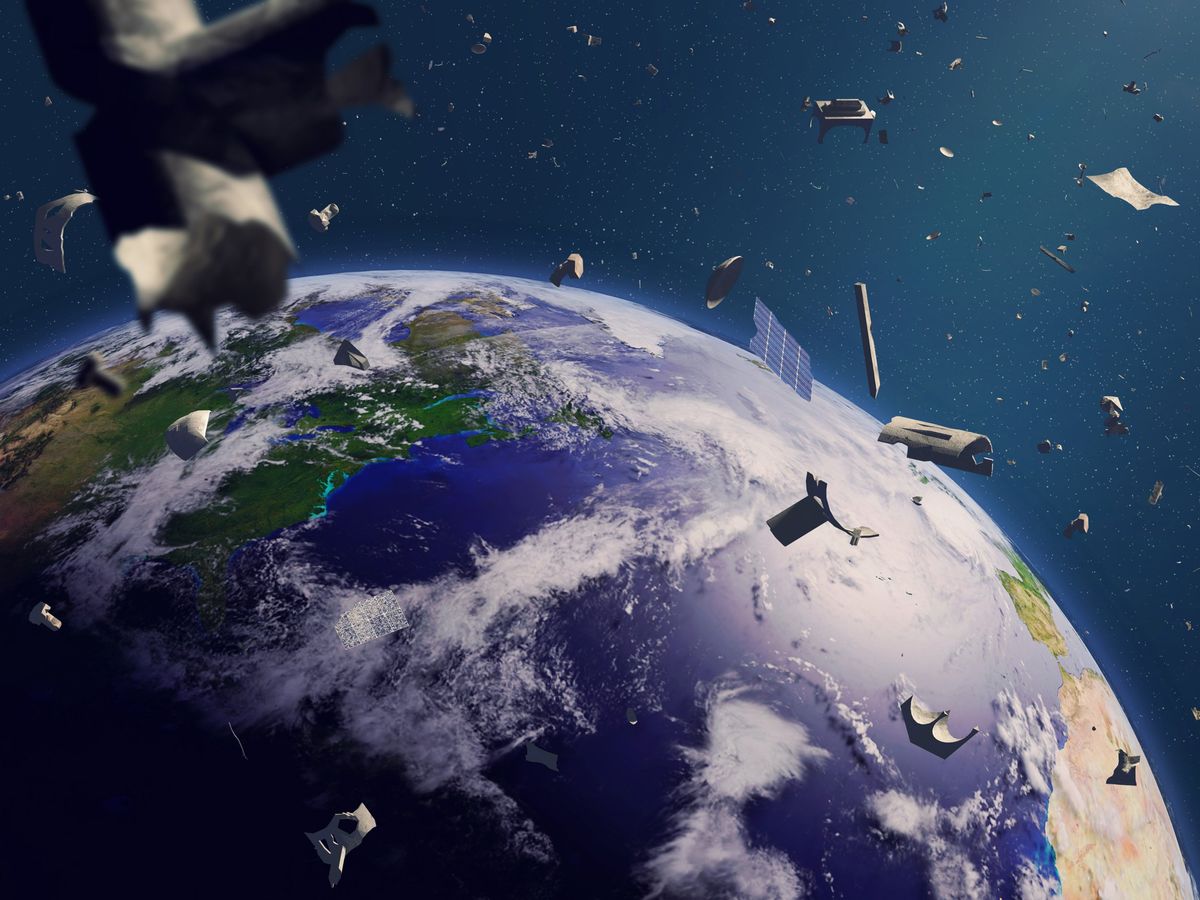Photos from low Earth orbit (LEO) are often strikingly beautiful. But what they typically fail to capture is the tens of thousands of debris pieces, or “space junk,” that orbit around Earth’s face like hungry mosquitoes—and threaten to hit satellites and other orbiting assets with enough force to be destructive. Such pieces of space junk—only a fraction of which space agencies like NASA and ESA can track with ground-based telescopes---are only going to multiply as mega-constellations like Starlink or OneWeb enter LEO.
A growing number of planners and researchers are concerned about whether further crowding could lead to a higher risk of catastrophic collisions that knock out communications satellites or even one day send fiery debris back to Earth. To better anticipate and avoid these situations, some are turning to computer simulations and artificial intelligence to better see what humans cannot.
Researchers are, for instance, using machine learning to investigate methods of debris removal and reuse. In a paper presented earlier this year at the European Space Agency’s second NEO and Debris Detection Conference in Darmstadt, Germany, Fabrizio Piergentili and colleagues presented results of their evolutionary “genetic” algorithm to monitor the rotational motion of space debris.
“Objects that move too fast cannot be easily captured,” Piergentili says. “So, if I have one mission to go into orbit, it is better to identify objects that move slowly, so they are easier to catch.”
In addition to developing neural networks to anticipate these collisions ---which can take time and considerable resources to train and test---other researchers like Lt. Col. Robert Bettinger are turning to computer simulations to anticipate satellite behavior.
In a paper published earlier this year in the Journal of Defense Modeling and Simulation, Bettinger, an assistant professor of aerospace engineering at the Air Force Institute of Technology, and coauthor Joseph Canoy investigated how likely that the breakup of a single satellite within the orbit of a mega-constellation would lead to a catastrophic collision either in LEO or medium Earth orbit (MEO).
To make predictions about these future events, Bettinger and Canoy used a combination of historic statistics and predictive modeling through a Monte Carlo simulation. Through these simulations, they were able to determine that mega-constellations in low Earth orbit have a risk of catastrophic conjunctions 14 times as many as satellites several thousand miles higher in MEO.
That said, this finding isn’t completely surprising, Bettinger admits, as LEO has a smaller spatial volume with more objects going at higher velocities than in MEO.
Federica Massimi is a Ph.D. student at Roma Tre University and first author on a paper published last December in Sensors that explores the way deep learning can be used to support debris detection in LEO. In a simulated environment, Massimi and coauthors demonstrated how a neural network can be trained on reams of radar and optical data from ground telescopes to make it easier for space debris to pop out of the noise.
“AI models can be trained using historical data to identify space-debris motion patterns and predict their future trajectories,” Massimi says. “This allows collision-avoidance maneuvers to be more effectively planned for active space missions and orbiting satellites.”
Beyond tracking debris that already exists in space, Massimi says she believes these methods will play a role in the entire life cycle of satellites launched as a part of mega-constellations. Increasingly, she says, spacefaring companies and organizations will need to optimize satellite distribution or assist with orbit management to avoid debris collisions that could cause cascading damage—if not exactly the apocalyptic outcome of the 2013 orbital collision thriller Gravity.
Yet, while introducing intelligent algorithms and simulations to the problem of space debris may seem like a no-brainer, Moriba Jah, associate professor of aerospace engineering at the University of Texas at Austin, says the world should be wary of relying too heavily on AI-based answers in a space that still has so many unknowns.
“[These] algorithm[s] assume that tomorrow looks like today,” Jah says. “So, if the version of today that you feed it is limited, the prediction of tomorrow is also going to be limited.”
Jah says that there are a number of other unknowns in the space environment too, such as atmospheric density, that make predicting debris behavior even more difficult.
“That’s still a gaping hole, scientifically,” Jah says. AI, he adds, therefore “has limited use given those known gaps.”
These concerns are something that Massimi considers in her work as well. Crucially, she says AI models need updating “with real-time information, including new debris detections and orbital changes.” This way, she adds, “algorithms can better adapt to the changing spatial environment.”
And if so, researchers hope AI can help keep the pictures from low Earth orbit as striking as ever, while keeping the orbits themselves much less so.
Sarah Wells is a science and technology journalist interested in how innovation and research intersect with our daily lives. She has written for a number of national publications, including Popular Mechanics, Popular Science, and Motherboard.



